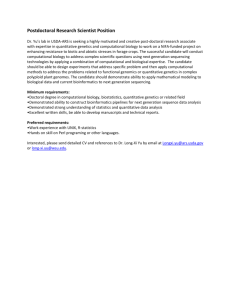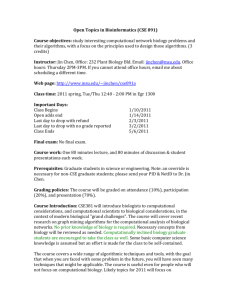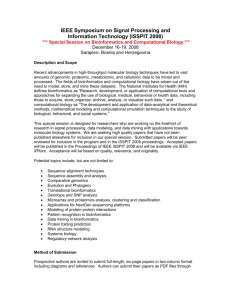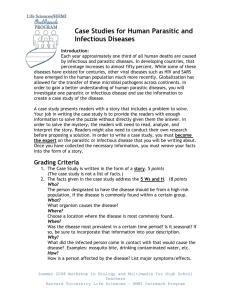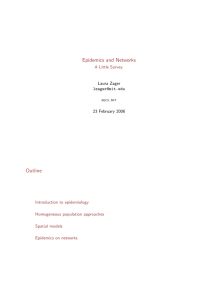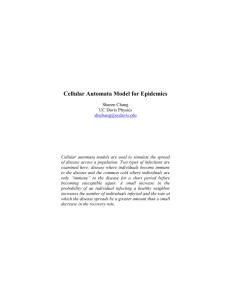Developing student quantitative knowledge and skills
advertisement
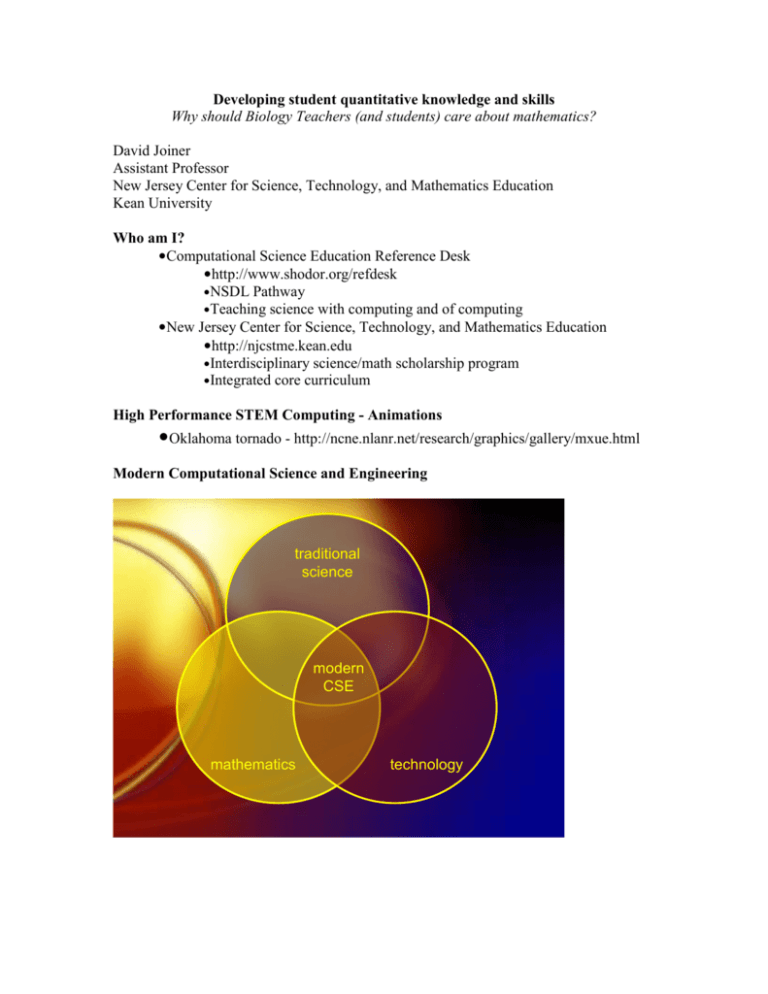
Developing student quantitative knowledge and skills Why should Biology Teachers (and students) care about mathematics? David Joiner Assistant Professor New Jersey Center for Science, Technology, and Mathematics Education Kean University Who am I? •Computational Science Education Reference Desk •http://www.shodor.org/refdesk •NSDL Pathway •Teaching science with computing and of computing •New Jersey Center for Science, Technology, and Mathematics Education •http://njcstme.kean.edu •Interdisciplinary science/math scholarship program •Integrated core curriculum High Performance STEM Computing - Animations •Oklahoma tornado - http://ncne.nlanr.net/research/graphics/gallery/mxue.html Modern Computational Science and Engineering traditional science modern CSE mathematics technology Parallels between math standards and computational science domains Arithmetic, Algebra Functions, Formulas Geometry, Graphing Statistics Problem Solving Modeling Visualization Data Mining and Analysis But what about Biology? •Computational Biology in practice •Bioinformatics •Molecular Modeling •Computation in teaching Biology •Helping students build understanding of systems and processes Bioinformatics •“Only” 20,000-50,000 “important” (i.e. coding) genes in the human genome •75 time as many non-coding genes •3 billion base pairs. •If the human genome project were a phone book, keeping track of all of the base pairs for one human would be a phone book of the western world, with an extension for India. •Even if you can store it, no human will ever make sense of it. Mathematical pattern matching and finding routines must be used to try to not only figure out what is going on with the human genome, but with genomes of all of the other species. Molecular Modeling •2000 UNFOLDING OF THE DNA BINDING DOMAIN OF HIV INTEGRASE (see http://folding.stanford.edu/results.html for video) •HIV uses proteins to insert its genetic code into our DNA. The DNA binding domain of HIV integrase (below) is the protein which HIV uses to grab onto our DNA such that it can then connect its genetic code into ours. •This movie shows a single trajectory of the unfolding of this protein under extreme denaturing conditions. Computational projects in Biology •Systems Dynamics Modeling •Application: SIR Model •Application: Population Dynamics •Software: VenSim PLE ( http://www.vensim.com/venple.html ) •Rules Based Modeling •Application: Evolutionary Biology •Software: Agent Sheets •Software: NetLogo Computational projects in Biology •BioInformatics •Applications: Genetics •Software: Biology Student Workbench •Molecular Modeling •Applications: Protein Folding •Software: NAMD, GROMACS, Folding@Home •Visualization •Applications: 3-D visualization of DNA, proteins, molecular interactions •Software: Chime, VMD, others •Data Mining •Database: Protein Data Bank Curriculum Integration at NJCSTME •Math courses paired with science courses •Calculus & Chemistry •Linear Algebra & Physics •Statistics and Biology •Semester projects •Modeling applied to problems in Bio, Chem, or Physics •Wet lab where possible, scheduling & supplies harder to provide than computer access •Modeling, including CS skills, included in Calculus sequence •Systems Dynamics (VenSim) •Rules Based Modeling (AgentSheets) •Computer Programming (MATLAB) A Detailed Example: The SIR Model •Three component model •Susceptible •Infected •Recovered •Systems Dynamics •New infected per day = infection rate * infected * susceptible •New recovered per day = recovery rate * infected •Rules Based •Susceptible people come into contact with infected and get sick •Infected people get better •Links •http://mathworld.wolfram.com/Kermack-McKendrickModel.html •http://en.wikipedia.org/wiki/Compartmental_models_in_epidemiology •http://www.shodor.org/MASTER/biomed/epidemio/sir/runsir.html •http://wofford-ecs.org/ScientificProgramming/SARS/index.htm VenSim Model Initial Parameters Susceptible = 999 Infected = 1 Recovered = 0 Recovery Rate = 0.5 Infection Rate = 0.002 Getting sick = infected*susceptible*infection rate Getting better = infected *recovery rate



